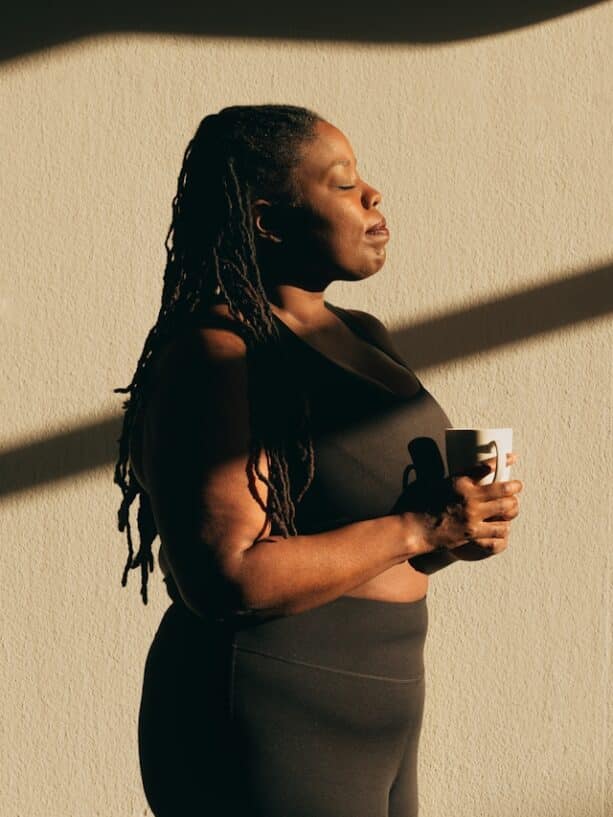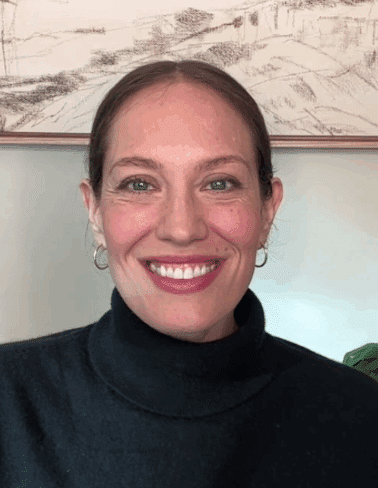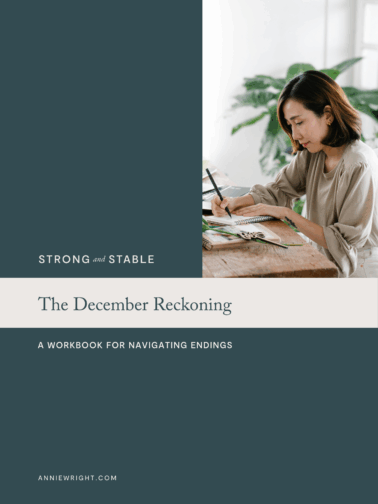TL;DR –Cultivating creative moments of healing means deliberately seeking experiences that provide what was missing in childhood—from tucking yourself into bed with the gentle routine you never received, to buying yourself that Christmas gift poverty denied, to taking self-defense classes to create the safety that was absent. These reparative experiences, inspired by Gestalt therapist Mariah Fenton Gladis's work, can be grand (hiring a therapist for "re-fathering") or simple (watching movies with protective father figures), expensive or free, solitary or shared. The goal isn't to erase the past but to actively fill developmental gaps, ultimately becoming your own "good enough inner parent" who provides what was missing then.
The process involves noticing jealousy triggers (what you envy in others often points to what you need), grieving what you missed, then creatively providing adult versions of those experiences. That dollhouse you couldn't have at seven? Buy it now and play with your child. The financial security that was absent? Take budgeting courses. The bedtime comfort that was missing? Create elaborate self-soothing rituals. It's both tragic that you didn't have a safe childhood and would be more tragic to deny yourself a beautiful adulthood—but as long as you're breathing, you can deliberately craft healing moments that nourish the child within.
As I mentioned two weeks ago, you may, in your relational trauma recovery journey and if you choose to become a parent, sometimes feel jealous of your own child, watching them have so much more than what you personally had growing up.
I mentioned, too, that if you feel jealousy and if you feel so inclined, you can use your feelings as a catalyst to deepen your healing work – both through active grieving and also cultivating creative moments of healing for yourself as an adult.
(And I want to mention that intentionally using your jealousy – regardless of whether you come from a relational trauma background or regardless of whether or not you have kids – is a healing intervention that nearly all of us could benefit from.)
But what does cultivating creative moments of healing even mean? And why is this important and why should you even bother?
Today’s essay explores all of these questions. Plus, I share some concrete examples from my own life that have helped me cultivate creative moments of healing in my own relational trauma recovery journey.
What does cultivating creative moments of healing mean?
I first learned about the concept of deliberately creating healing moments from the late, incredible Gestalt psychotherapist Mariah Fenton Gladis.
I was privileged to attend one of her workshops at Esalen. She crafted “moments of exact healing” for workshop participants (myself included) who were wrestling with pains and deep griefs.
It was beautiful to witness her work: to see how she would physically arrange group participants in ways that mirrored family of origin dynamics for the person in the “hot seat” and to have them say out loud the very thing that a person most longed to hear and what would happen emotionally after this occurred.
These exact moments of healing took place in a controlled setting under the guidance of a licensed, skilled professional. And they were profound.
But these exact moments of healing don’t have to just happen in group therapy or one-on-one therapy settings.
As I’ve come to understand and define them, cultivating creative moments of healing can also look like noticing, seeking out, and intentionally making happen the literal actions, tasks, opportunities, and experiences that provide some of what we may not have received in childhood.
These experiences of creative moments of healing can be big or small.
They can happen when you’re alone or with others.
Shift and change or remain the same for years.
Take effort, time, and money, or nearly none at all.
And there are as many ideas and possibilities for creative moments of healing as there are people on the planet.
But to help catalyze your thinking about what cultivating creative moments of healing could look like for you, some ideas might include the following:
- Maybe you were never provided a calming, regular, and reliable bedtime routine and evening tuck-in as a child. A reparative experience for you now as an adult in your healing journey coming from a relational trauma background could look like: Giving this to yourself! Create a calming, regular bedtime routine. (Maybe with a lovie and mug of hot milk.) And literally tucking yourself into bed. (Or having your partner do this for you if you feel comfortable with them doing this).
Curious if you come from a relational trauma background?
Take this 5-minute, 25-question quiz to find out — and learn what to do next if you do.
START THE QUIZ- Maybe you grew up in poverty and were never taught how to manage, budget, and plan for your financial future. A reparative experience for you now as an adult in your healing journey coming from a relational trauma background could look like: Subscribing to an amazing budgeting software and taking their financial education courses to help you get a handle on your money. And then working diligently to logistically and financially protect yourself as an adult.
- Maybe you were never given the opportunity to feel safe, secure, and protected in your home and neighborhood. A reparative experience for you now as an adult in your healing journey coming from a relational trauma background could look like: Taking a self-defense course. Or installing additional deadbolts on your home doors. Or even befriending your local neighborhood police officers.
- Maybe you never got to experience the fierce, wise, strong protection of a parent. A reparative experience for you now as an adult in your healing journey coming from a relational trauma background could look like: paying for re-fathering that can give you the experience of this protection in some ways, or assigning yourself specific TV shows and movies where protective, wise, loving fathers defend their children against all odds. And allowing this external modeling to touch you and inspire your own inner fathering.
- Maybe you never got the experience of spacious, open-ended joyful play that is every child’s right. A reparative experience for you now as an adult in your healing journey coming from a relational trauma background could look like: Getting curious about what brings you joy, what lights up your body. And then deliberately seeking out play and fun – solo, with friends, or even parallel play with your child.
- Maybe your family was never financially stable enough to get you what you dearly wanted for Christmas one year (or all of the years of your youth). A reparative experience for you now as an adult in your healing journey coming from a relational trauma background could look like: literally buying that very thing for yourself now. (Side note: I did this this past Christmas for my daughter when I bought her a dreamy, heirloom-quality hardwood dollhouse. She and I have played with it every day since. And I can’t tell you how healing and fun this feels for me!)
And this list of creative moments of healing is just the tip of the proverbial iceberg!
Why is cultivating creative moments of healing so important?
Whatever and however your own creative moments of healing look, the goal is for you to internalize these healing activities, experiences, and relationships and let them “fill in” some of your missed-out-on developmental gaps so that they can provide you with the experiences and tools to ultimately become your own “good enough inner parent.”
Ultimately, becoming your own “good enough inner parent” is THE therapeutic work. The lifelong work of most of us have to do. And certainly the lion’s share of the work for those who come from relational trauma backgrounds.
Becoming your own good enough inner parent entails recognizing what you, perhaps, developmentally lacked as a child/adolescent/young adult. Grieving what you missed out on. And then providing for yourself actively and deliberately what you may need and want in order to heal and thrive in your adult life now.
Again, and again for as long as it takes to nourish and safeguard the little child inside of you.
How do I know what creative moments of healing I need for myself?
You may already know some of what you need simply by reading this essay.
But if you’re stumped, I’ll invite you to consider the following prompts:
- What came up for you when you read those above vignettes about what creative healing moments could look like? Did anything resonate or prompt some ideas for you?
- What do you long for the most that your child (if you have any) has now?
- When (if at all) do you get jealous or envious of the friends and acquaintances in your life? What do you know about those jealousy triggers and what they might point to?
- When you reflect back on your childhood, what were some of the biggest deficits in your upbringing? Touch, verbal affirmation, physical safety, financial stability?
- What touches you, moves you, and makes you cry when you see a child – in real life or on TV or in the movies – receiving something (love, time, attention, play, etc) from their parents or others?
- If money were no object, what would you do to give yourself the adult equivalent of a safe, stable, loved childhood?
Integrating Creative Healing Moments in Trauma Therapy
When you bring your experiments with creative healing moments into therapy—sharing how you finally bought yourself that chemistry set or created an elaborate bedtime ritual—you’re not reporting childish indulgences but profound reparative work, discovering that learning how to remother yourself happens through both professional guidance and daily creative interventions.
Your trauma-informed therapist helps you identify which developmental gaps need attention by tracking patterns: the rage when seeing children comforted points to missing soothing, the tears during father-protection scenes reveal absent safety, the jealousy of others’ financial literacy exposes educational neglect. Together, you design specific healing experiments—not random self-care but targeted reparative experiences addressing precise developmental deficits.
The therapeutic process involves processing both the healing and the grief these moments evoke—because tucking yourself in tonight simultaneously soothes current you and breaks the heart of child-you who went to bed alone and afraid. Your therapist holds space for this complexity, helping you understand that tears while playing with your child’s dollhouse aren’t regression but integration, that taking self-defense classes isn’t paranoia but creating bodily safety never provided. Through discussing your experiments, you refine what works: maybe financial planning courses feel empowering while bedtime routines feel forced, leading to customized approaches that honor your unique history.
Most powerfully, therapy helps you recognize that these creative moments aren’t consolation prizes for a stolen childhood but active construction of internal resources—each reparative experience literally builds neural pathways of safety, care, and worth that weren’t laid down developmentally.
Your therapist celebrates as you report sleeping better after establishing bedtime rituals, feeling safer after self-defense training, experiencing joy through play, understanding that you’re not just healing the past but actively becoming the good enough parent to yourself that you always deserved, one creative moment at a time.
Wrapping up.
Finally, please remember: it is a tremendous loss that you didn’t get to have a safe, functional, healthy childhood.
It would be a greater tragedy if you didn’t get to have a good adulthood now.
But as long as we have breath in our bodies, we can still consciously and deliberately work to give ourselves the most beautiful adulthood possible.
And so, doing the work to be curious about what creative moments of healing we need and then working deliberately and actively to give this to ourselves is very important work.
Particularly and especially if we come from relational trauma histories.
And now, I’d love to hear from you in the comments below:
What are one or two examples of creative moments of healing that you’ve provided for yourself in the past? What one or two examples of creative moments of healing are you inspired to try and give yourself after reading today’s essay?
Please, if you feel so inclined, leave a message in the comments below. Our monthly blog readership of 20,000 plus people can benefit from your wisdom and experience.
Here’s to healing relational trauma and creating thriving lives on solid foundations.
Warmly,
Annie





